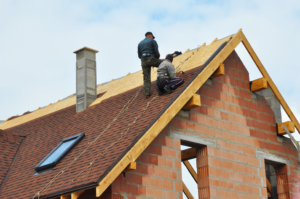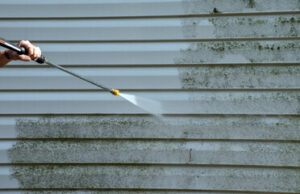A roof is one of the most important parts of a house. It protects the home from rain, snow, sunlight, and extreme temperatures. A good roof can also increase a home’s value.
There are many types of roofs. Some have a flat surface, while others are steeply sloped. A sloping roof is usually designed to drain water.

Shingles are the stalwart guardians of your roof against the elements. But, even these hardy materials are not impervious to the insidious threat of rot. Shingles deteriorate when exposed to prolonged moisture, often caused by inadequate ventilation or the growth of algae and moss. These conditions create an ideal breeding ground for moisture, infiltrating the shingle’s layers and setting the stage for gradual but steady decay.
One of the most common problems with shingles is their failure to adhere to the roofing substrate. Poor adhesion can be due to manufacturing inconsistencies, improper installation, aging and deterioration, contamination of the adhesive with dirt or other substances, cyclic thermal expansion and contraction and a number of other factors.
Blistering is another common problem with shingles. When the granules that cover the asphalt in the shingle begin to wear off, it allows the UV rays from the sun to penetrate and degrade the underlying materials. When this happens, the shingles become brittle and more likely to be lifted by wind.
It is also important that you regularly inspect your shingles to ensure that the seams are fully sealed. A properly sealed shingle will not only prevent leaks, but will also help to extend the life of your roof.
Another issue that can impact the shingle’s performance is the pitch of your roof. A steep pitch can increase the amount of wind that passes over the shingle, leading to greater uplift and potential damage.
Some of these issues can be avoided by hiring a qualified and experienced contractor to install your shingle roof. You should look for a contractor who is licensed, insured, and in good standing with your local building department. You should also ask for references and a list of satisfied customers. Thoroughly review any warranties that the contractor offers so you understand what they cover.
Some shingle manufacturers, like IKO, have developed products that can help to minimize these problems, such as the use of FastLock adhesive strips. These strips can make it easier for a roofer to seal the seams and provide additional protection from strong winds.
Underlayment
The roof underlayment is one of the most important parts of a roof. It protects the rest of your roof from water damage and offers an extra layer of protection for your house. The underlayment is not indestructible, however, and it’s important to understand what can cause it to wear out faster than expected so that you can take proactive measures to avoid damage.
The type of underlayment you choose can affect its lifespan. Some types are more durable than others, and some are more compatible with different roofing materials than others. You should also consider your climate when deciding which type of underlayment to use. For example, a metal or tile roof will need an underlayment that isn’t as vulnerable to freezing temperatures and snow and ice.
Asphalt-saturated felt underlayment has been the standard for many years because it is inexpensive, easy to install, and effective at preventing leakage. It also acts as a vapor retarder and changes its permeance depending on whether it is dry or wet. Newer, synthetic polymer underlayments are gaining popularity because they can last up to 50 years and are highly resistant to moisture penetration.
Another factor that can affect the underlayment’s lifespan is how well it’s maintained. This includes things like keeping the attic space well ventilated and performing regular roof inspections to identify potential issues before they become major problems. It’s also important to keep in mind that the underlayment can be damaged by improper installation techniques.
The underlayment should be installed by a certified roofing contractor, so you can feel confident that it’s being handled properly and will provide the level of protection you expect. Incorrectly installing the underlayment can lead to water leaks, mold colonies, and even structural problems in your home. If you’re concerned about your roof’s underlayment, contact a roofing company for more information about the best products and practices to ensure it remains in good condition. A quality underlayment can significantly increase the lifespan of your roof and help prevent costly repairs in the future. The longer your underlayment lasts, the less often you’ll need to replace it.
Flashing
Flashing is a strip of metal that lies in between areas of the roof prone to leaks, such as joints and intersections. It helps to keep water and moisture from seeping into these vulnerable areas, protecting the roofing structure and interior of the home. Flashing is usually made of durable materials that can withstand harsh weather conditions, such as metals that resist corrosion.
Depending on the situation, roofers may use either exposed or embedded flashing. Exposed flashing is typically a strip of sheet metal, while embedded flashing is a flexible rubber or plastic material. The difference is that exposed flashing is partially visible, while embedded flashing is hidden from view and used underneath shingles or tiles. It is important to have all flashing installed properly in order to prevent leaks and ensure a strong seal between the roof and the structure of the home.
Standard roof flashing is used at penetration points, such as chimneys, vent pipes, and skylights, as well as the edges of a roof. These types of flashing are often installed during new construction projects or when a roof is replaced. Flashing is also installed around the edges of walls where they meet a roof. These types of flashing may be known as counter, step, or parapet flashing.
Leaks caused by faulty flashing can have devastating effects on homes. The damage goes far beyond just the roof, affecting the interior, insulation and even the foundation of the house. When a roof has leaks, it is crucial to inspect and repair the flashing as soon as possible.
One of the main reasons that flashing fails is that it becomes damaged or deteriorates over time. This can occur for a number of reasons, including weathering and exposure to the elements, or it could be the result of a mistake during installation. The most common type of flashing is made from copper, galvanized steel or aluminum. It is often coated in a protective finish to increase its longevity and resistance to corrosion.
A common sign that flashing is deteriorating is the appearance of water spots on ceilings directly below penetration points on a roof. These spots may appear as dark stains or as cracks in the drywall. Another indication that flashing is failing is when it appears to be bent or warped.
Soffit
As the name suggests, a soffit is essentially the underside of an eave. It covers the underside of roof overhangs and conceals rafters, helping protect them from moisture and weather elements. Soffits also add an aesthetic element to a home’s exterior and can be designed to complement or contrast the color of siding.
The primary function of a soffit is to hide the structural components of a roof overhang while adding visual appeal. During routine house and roof maintenance, it is important to check for signs of damage to the soffit. If left unattended, this could lead to rot or even leaks in the house. It is recommended that a soffit be replaced immediately after any damage is noticed.
A soffit is the underside of a roof’s overhang and can be made from wood, aluminum or fiber cement. Wood and fiber cement require painting to resist rot and decay, but aluminum is virtually maintenance-free. Most homeowners choose a material that will compliment their siding and roofing for an integrated look.
It is a good idea to choose high-quality materials for your soffit and fascia, as they are both exposed to weather elements and pests such as insects, mice, squirrels, raccoons and possums. Opting for low-quality materials could lead to premature deterioration, costly repairs or even replacements in the future.
Besides protecting the rafters and other structural components of a roof, soffits also help regulate air flow in an attic space. They are often perforated or vented to allow air to circulate freely. This can help keep the attic cooler in summer, allowing you to lower your thermostat and save on energy costs. It also prevents condensation that can lead to mold and helps snow melt and drain from the roof instead of accumulating in the eaves.
A damaged or neglected soffit can create an unkempt appearance that detracts from the overall appearance of your home. Regular soffit inspection can identify minor issues that may become worse without immediate repair, and this can prevent further damage to your home and lead to costly repairs.
